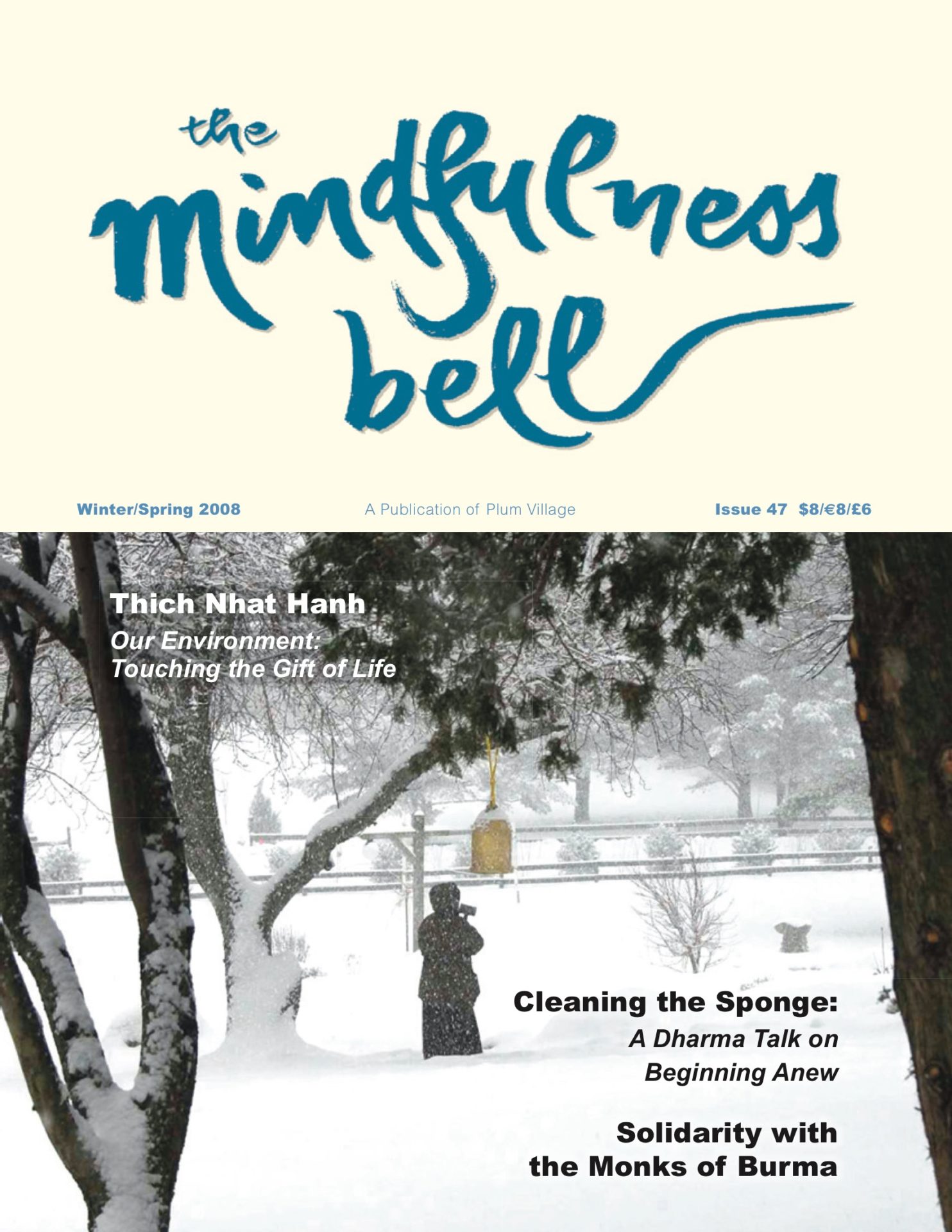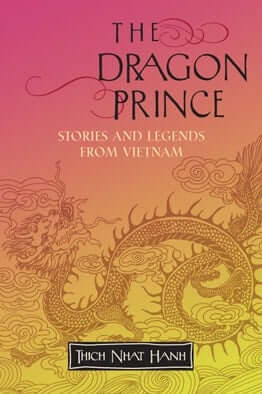
The Dragon Prince: Stories and Legends from Vietnam
By Thich Nhat Hanh
Parallax Press, 2007
Reviewed by Emily Whittle
“Long ago, when earth and sky were still covered in darkness, a great bird with wings like curtains of night….”
Before the end of the first sentence in The Dragon Prince,

The Dragon Prince: Stories and Legends from Vietnam
By Thich Nhat Hanh
Parallax Press, 2007
Reviewed by Emily Whittle
“Long ago, when earth and sky were still covered in darkness, a great bird with wings like curtains of night....”
Before the end of the first sentence in The Dragon Prince, the wide-eyed child in me is awakened and I am hanging on every word, enchanted by a rich story that unfolds like a compelling dream.
But don’t make the mistake of thinking these stories are mainly for children. These are stories that resonate on deep levels, weaving myth, legend, and Vietnamese history into an intricate tapestry to delight and inform all ages. Thich Nhat Hanh’s simple, straightforward prose refreshes my literary palate like a piece of fresh fruit after a meal.
In keeping with the author’s lifelong dedication to mindfulness, these stories emphasize interconnection, cooperation, and the resolution of conflict through understanding. Without being saccharine or scolding, they water good seeds in us. At the same time, we are educated about Vietnamese culture, with details such as the origin of traditional earth and sky cakes and the practice of chewing betel nuts.
The third story begins, “It had not rained in over six months.” Again, I am hooked. It has not rained in my town in North Carolina in five months. Maybe this story will give me a clue to the meaning of this terrible drought that signals the growing imbalances of nature.
Perhaps we need to dive down into the store consciousness to awaken the Dragon Emperor that resides in us all. He’s been napping, waiting for us to make the inner journey. We only need to ask his help to slay the monsters of greed, jealousy, discrimination, and hate. It will take courage, cooperation, and concentration but we can do it. Then the rains can come and the parched fields will turn green again.
Maybe this is not the meaning intended by Thich Nhat Hanh, but that’s the power of myth and legend. Although Vietnamese, these stories are timeless and placeless. They rise up from the collective unconscious like deeply rooted trees. I read them hungrily. They feel like good medicine.
The last story, “A Bouquet of Flowers,” goes right to the heart of my own suffering and the suffering of my friends. A dying father leaves his son and daughter a poem from the ancestors that will help them find a buried treasure. On his deathbed he instructs them, “…Don’t be as busy as I have been. Work just enough to live, and take the time to find the deep meaning of the poem and uncover the treasure.”
The son, who ponders the poem in a literal way, fails to understand, despite three years of contemplation in a monastery. It is the daughter who penetrates the meaning of the poem, simply by tending the rice fields with concentrated mindfulness. Without looking for the treasure, she finds it in the details of her daily life.
There is treasure embedded in the stories in The Dragon Prince. Read them and it can be yours!
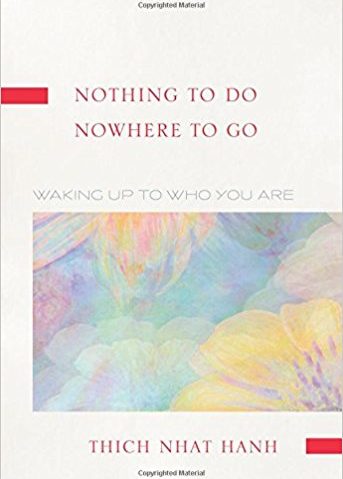
Nothing to Do, Nowhere to Go: Waking Up to Who You Are
By Thich Nhat Hanh
Parallax Press, 2007 Softcover, 204 Pages
Reviewed by Judith Toy
In this book we receive two gifts tied up in one package: twenty-three teachings of Master Linji and twenty-three commentaries on those teachings by Thich Nhat Hanh, with a bonus of five practices offered by Thich Nhat Hanh based on Linji’s teachings.
In Teaching 14, Master Linji outlines for us the Holy Grail of mindfulness practice — the promise that we can indeed realize our clear original nature. That each of us can roam freely through the world and reach all the Dharma realms. That if we meet the Buddha, we can speak to the Buddha; if we meet a hungry ghost, we speak to the hungry ghost. Wherever we go, we are at home. “Everywhere is pure, the light of clarity illumines the ten directions, and you see the oneness of all that is.”
Master Linji is famous for saying that when we meet the ghost Buddha, we should cut off his head. Thay always tells us, whether we’re looking inside or outside ourselves, we need to cut off the head of our views and ideas, including our notions of Buddhist teachings.
This book finds me at a time in my life when I am physically exhausted because of all my Dharma activity and my involvement in our sangha. How ironic—and, gulp—unskillful for a teacher of mindfulness! Perhaps I need to cut off the head of the notion that I must launch and do so many worthy projects.
Master Linji might well have hit me with his stick! That was the effect of reading this book. I am stunned into noticing the present moment. I am stunned into realizing that I am so busy teaching others to stop that I do not stop myself! In a recent article by the president of Shakyadita, the International Buddhist Women’s Association, Bhikshuni Karma Lekshe Tsomo warns of this paradox in monastic life as well as lay life: “[We]... cannot become genuine models of simplicity and contentment unless we live simple and contented lives.” St. Francis of Assisi said, “Always preach the gospel. If necessary, use words.”
What does this mean to one who is worn out from over-activity? Again and again, Master Linji, as well as Thay, warns us about the “busy” trap, suggesting we should become “busynessless”—a term coined by Linji. So we can conclude that even in the ninth century during the Tang Dynasty, in Jiangxi province, just south of the Yangzi River, folks were caught in too much to do! In 2000, when I visited Plum Village, then too, I felt struck by the stick when Thay said to several hundred people, “You do not have to be the director of anything.” I felt as if he were speaking directly to me.
After mastering the teachings, our ancestor Linji threw away his books to live the Dharma! In his commentary on Linji’s Teaching 14, Thay tells us, “A sutra is only a supporting condition to manifest our own wisdom.” The same could be said of the Buddha and the Sangha.
Linji states very clearly that learning a sutra or even practicing seated meditation in a spirit of attachment only creates more karma. What indeed, keeps us busy if not ego and attachment? What an inner revolution! The spirit of Nothing to Do, Nowhere to Go can free us from samsara, the vicious cycle of birth and death and suffering, and lead us to the Pure Land, which is none other than right here, right now.
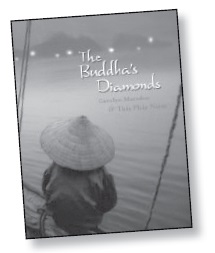
The Buddha’s Diamonds
By Carolyn Marsden and Thay Phap Niem
Candlewick Press, 2008 Softcover
Reviewed by David Flint
As The Buddha’s Diamonds begins, ten-year-old Tinh sits in the village temple and “sighs, the knots inside him relaxing” as the monks and nuns begin to chant. The Abbot offers a teaching about how “The Buddha’s Diamonds” — the sunshine, the ocean, our loved ones — are always available to us, even in a poor fishing village. And yet a few minutes later Tinh encounters his first remote-controlled toy car —sent to his cousin by a rich uncle in America:
“Tinh reached for the remote control.... He tapped the button on the left and the car drove toward a palm tree. He maneuvered the car around the base of a tree.... He loved the feeling of power in his hands.... This car was a diamond the monk didn’t know about.” Tinh spends much of his time daydreaming about having a life-sized car like this.
And so it goes in this lovely and evocative children’s book, set in a Vietnamese fishing village not long after the war has ended. Through Tinh’s eyes we experience the effect of consumer goods and consumerism on one fishing village. We see the subtle and unspoken shifts in the relationship of a father and son, in the warmth of a child’s life lived within an extended family. This story takes us into a huge, exciting, frightening and dangerous ocean storm. And it shows us the possibility of dwelling in happiness in the present moment.
We see Tinh learning lessons in wise attention as he accompanies his fisherman father: “You’re daydreaming again, Ba said. When the boat is moving, pay attention.”
Later, after the storm has damaged many homes and boats, including his own, Tinh sees the statue of the Buddha. “He even felt the beginnings of a glow around his own heart.” And then Tinh “refused to look at the Buddha’s face. He turned away from happiness and started home,” feeling it is wrong to be happy at such a time.
This is not a book of good advice all dressed up as a children’s story. Life itself teaches Tinh about wise attention and how the mind can be happy in difficult situations. One eleven-year-old said of The Buddha’s Diamonds: “I liked it. It has lots of descriptive words so you can really get into it.”
This book can be enjoyed by children and adults, and is good for reading out loud. It can also be used as the basis for discussion in a children’s group in a Sangha.
Books of Note
Compiled by Judith Toy
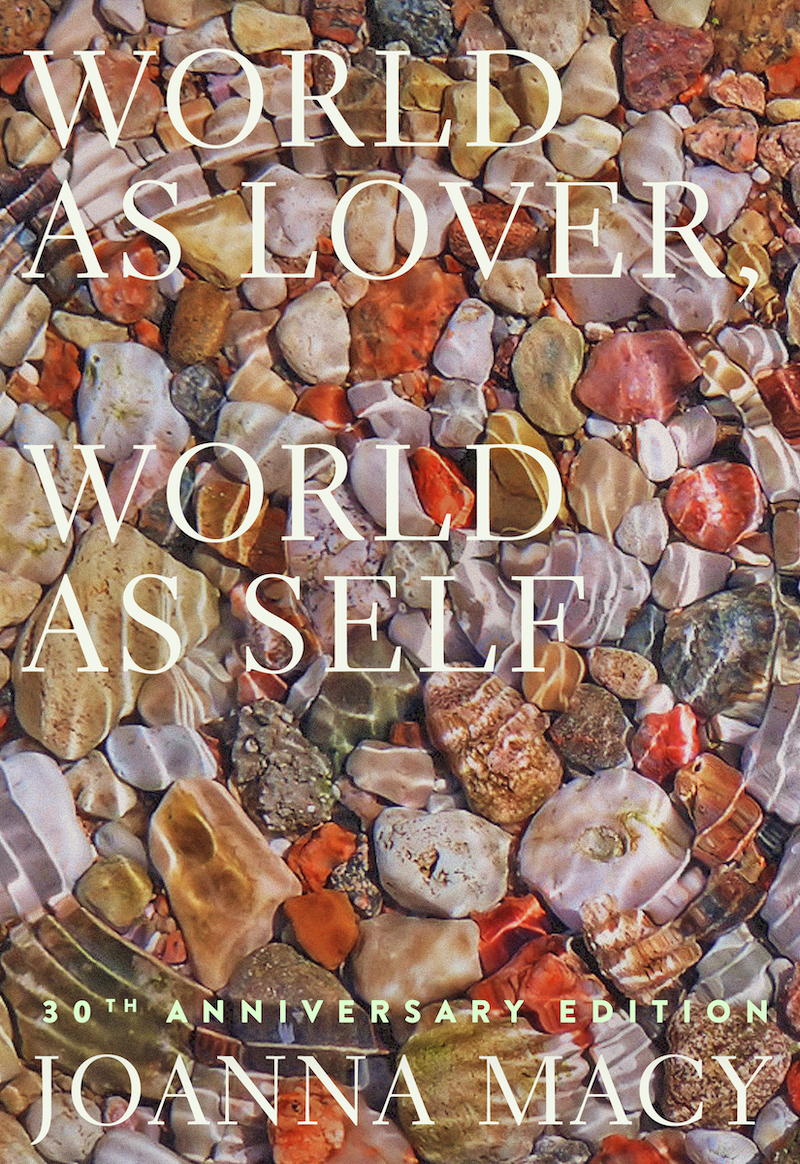
New Edition of World As Lover World As Self: Courage for Global Justice and Ecological Renewal, by Joanna Macy, Parallax Press, 2007, 206 pages, paper. A visionary ahead of her time, in this modern classic the author sounds a call for us to wake up to a deeper relationship with the Earth or risk its destruction. Includes spiritual practices for activists.
First Snow, by Helen Coutant, with pictures by Vo-Dinh, Alfred A. Knopf, New York, 1974. A picture book for children age five to nine. A charming story about a little girl whose grandmother is dying, a story that grew out of the shared belief of Coutant and her husband, Vo-Dinh, that many of the ancient ideas and traditions of Buddhism can have meaning for all people. Available through out-of-print book searches online.
Modernity and Re-enchantment: Religion in Post-revolutionary Vietnam, edited by Philip Taylor, Institute of Southeast Asian Studies, Singapore, 2007, 491 pages. Part of the publisher’s Vietnam Update Series of annual conferences that focus on recent economic, political, and social conditions in Vietnam. An academic textbook, with a forty-two-page chapter by sangha member John Chapman on Thich Nhat Hanh’s return to Vietnam in 2005, as well as some details of Thay’s early life.
Trauma Stewardship: An everyday guide to caring for self while caring for others, by Laura van Dernoot Lipsky with Connie Burk, Las Olas Press, 2007, 263 pages. Helps us recognize how we interact with others’ suffering, pain, crisis, and trauma, and the effects of trauma exposure everywhere: in ourselves, our organizations, and our society. “Reading this book is like looking into a mirror,” writes Thich Nhat Hanh in his endorsement. “We will see ourselves much more clearly, will understand ourselves much better…” For information go to www.traumastewardship.com.

